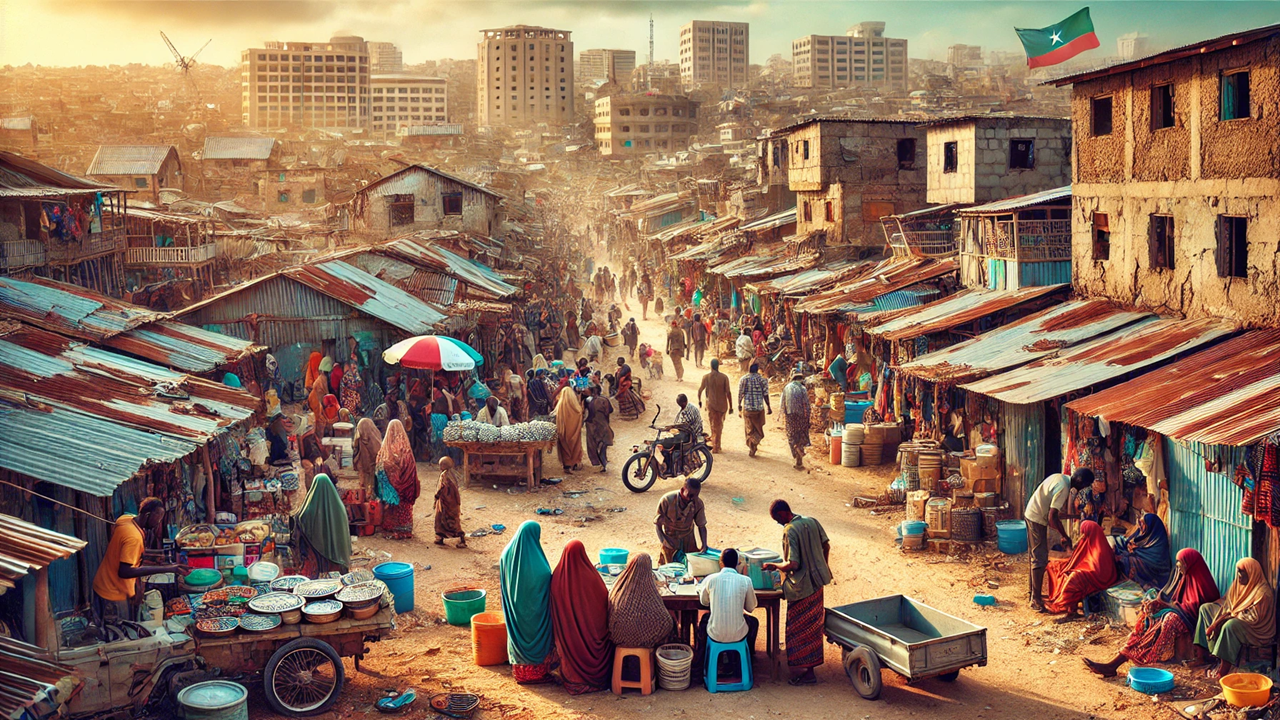Somalia’s Path to Equity: Tackling Poverty, Climate Shocks, and Economic Inclusion
Somalia faces persistent poverty, widespread inequality, and challenges from climate shocks, as revealed by the latest World Bank assessment. With over half the population living below the poverty line, the report highlights how economic strategies focused on climate resilience, labor market reforms, and inclusive policies could provide hope for struggling Somali communities. This article dives into Somalia's poverty landscape, examining urbanization's role, the plight of nomadic populations, and the path forward to economic growth and social equity.

In Somalia, where poverty, inequality, and climate-induced shocks are the daily reality for millions, a new report from the World Bank sheds light on the economic and social factors trapping large segments of the population in hardship. Despite some economic gains, the country faces complex barriers to growth, with the majority of citizens still falling beneath the poverty line. The “Somalia Poverty and Equity Assessment” brings to the forefront urgent policy needs and long-term strategies to build resilience and equitable economic opportunities across all regions of Somalia.
Economic Landscape and Growth Challenges
Somalia has made strides in economic recovery, notably achieving a milestone in debt reduction in 2023 that slashed its external debt to just 6% of GDP. But these gains are overshadowed by Somalia’s dependency on imported essentials and frequent climatic shocks, particularly prolonged droughts that have devastated both urban and rural livelihoods. Efforts toward political stability continue, yet structural challenges leave growth fragile and unable to substantially raise GDP per capita or household income for most Somalis.
Poverty and Inequality in Somalia
With more than half the population living below the national poverty line, the report highlights the depth of Somalia’s poverty crisis. Poverty rates soar among nomadic communities, reaching a staggering 78%, while urban areas, despite better access to services, still see nearly half their residents in poverty. The report further reveals that “non-monetary poverty”—characterized by a lack of education, clean water, and sanitation—affects almost every nomadic household. These disparities in access reflect broader issues in Somali society, where chronic poverty impacts nearly half of all households, leaving only 15% free from both monetary and non-monetary deprivation.
Employment and Livelihoods: Limited Pathways Out of Poverty
A key insight from the assessment is Somalia’s unique labor market dynamics, where only a quarter of working-age individuals actively participate in the labor force, one of the lowest rates for a low-income country. With opportunities often limited to low-wage, subsistence roles, most individuals find it challenging to escape poverty through employment alone. Household enterprises (HHEs) provide employment, particularly for women, yet only a fraction generate enough profit to lift families above the poverty line.
Additionally, while wage employment is more common than in other low-income countries, high-quality jobs are scarce, often accessible only to those with higher education in urban areas. The high rate of low-wage positions in the rural and nomadic sectors means many households remain trapped in poverty despite employment.
The Climate Crisis and Vulnerability
Somalia is among the countries most exposed to climate risks, with frequent droughts and, more recently, flooding events affecting millions. These shocks hit rural and nomadic households the hardest, leading to drops in income, forced displacement, and resource loss. Wealthier households can often weather these crises by selling assets or drawing on savings, but the majority resort to severe coping strategies like cutting food consumption.
The report underscores how these climate-related challenges disproportionately affect the poorest regions and social groups, amplifying Somalia’s poverty crisis. In the past year alone, almost 70% of households reported severe economic impacts from the latest drought—a situation exacerbated by high food prices as the drought limited domestic food production and increased reliance on costly imports.
Policy Recommendations: Charting a Path to Resilience and Equity
The World Bank assessment outlines a roadmap for Somalia’s policymakers to build resilience and foster economic equity. Key among these recommendations is harnessing urbanization’s potential for improving public services and creating labor demand for low-skilled workers, particularly through public work programs. By boosting service delivery in urban areas, Somalia could address both economic needs and reduce inequality, leveraging urban centers to uplift low-income populations.
The report also highlights the need for focused rural policies that build climate resilience among nomadic and agricultural communities. By promoting climate-smart agriculture, supporting sustainable resource use, and improving access to vital inputs like water, Somalia can better equip rural households to withstand future climate shocks. Additionally, programs aimed at herd protection and livestock productivity could significantly improve resilience in nomadic areas, where livestock losses often lead to devastating economic impacts.
Lastly, the report emphasizes investment in education as a long-term solution to poverty. Expanding access to affordable education, particularly in urban centers with high poverty concentrations, could lay the groundwork for sustainable poverty reduction by enhancing human capital and job prospects for future generations.
The Road Ahead
Addressing poverty in Somalia demands a comprehensive approach that considers both immediate economic needs and long-term structural changes. By implementing policies that bolster economic inclusion, climate resilience, and educational access, Somalia has the opportunity to reduce inequality and foster a more resilient society. But the road ahead requires consistent commitment from both Somali leaders and international partners to ensure that every Somali has the chance to escape poverty and thrive.
- FIRST PUBLISHED IN:
- Devdiscourse
ALSO READ
Indian Stock Markets Plummet as Investors Brace for Economic Challenges Ahead
World Bank Highlights Role of Clean Energy Technologies in Driving EU Growth Amid Economic Challenges
FMCG Industry Eyes Revival Amid Economic Challenges
Iran's Critical 2025: Navigating Nuclear Tensions and Economic Challenges
Chinese Stocks Rebound Despite Pandemic and Economic Challenges










